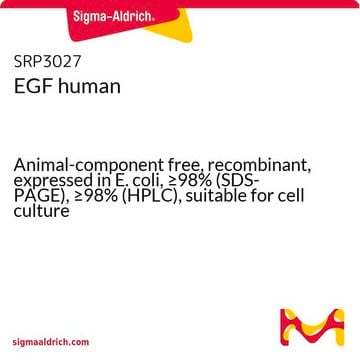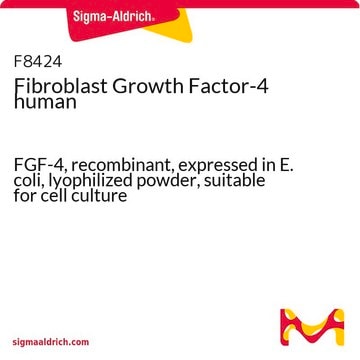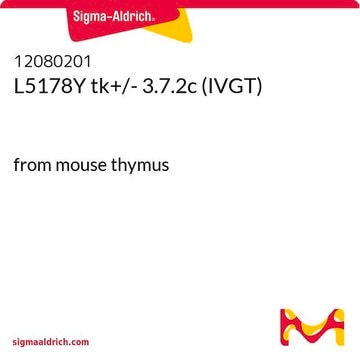Transportation information can be found in Section 14 of the product's (M)SDS.To access the shipping information for this material, use the link on the product detail page for the product.
H1138
sérum de cheval
Donor Herd, USA origin, Heat inactivated, sterile-filtered, suitable for cell culture
Synonyme(s) :
HS, sérum, sérum équin, sérums, sérums de chevaux, sérums équins
Sélectionner une taille de conditionnement
60,20 €
Date d'expédition estimée le17 avril 2025
Sélectionner une taille de conditionnement
About This Item
60,20 €
Date d'expédition estimée le17 avril 2025
Produits recommandés
Source biologique
horse serum
Niveau de qualité
Stérilité
sterile-filtered
Composition
Hemoglobin, ≤20 mg/dL
Origine
USA origin
Technique(s)
cell culture | mammalian: suitable
Impuretés
≤10 EU/mL Endotoxin
Conditions d'expédition
dry ice
Température de stockage
−20°C
Vous recherchez des produits similaires ? Visite Guide de comparaison des produits
Application
- as a media supplement in the differentiation medium to culture the pheochromocytoma (PC12) cells
- in immunocytochemistry and immunohistichemistry
- to study the therapeutic effect of serum treatment on cardiomyocyte viability
Notes préparatoires
Prepared by heating at 56 °C for 30 minutes.
Code de la classe de stockage
10 - Combustible liquids
Classe de danger pour l'eau (WGK)
WGK 3
Point d'éclair (°F)
Not applicable
Point d'éclair (°C)
Not applicable
Équipement de protection individuelle
Eyeshields, Gloves
Faites votre choix parmi les versions les plus récentes :
Déjà en possession de ce produit ?
Retrouvez la documentation relative aux produits que vous avez récemment achetés dans la Bibliothèque de documents.
Les clients ont également consulté
Articles
Find answers to frequently asked questions (FAQs) about FBS and other serum products, and links to related products.
Protocoles
How to stain organoids? A complete step-by-step protocol for immunofluorescent (IF) and immunocytochemical (ICC) staining of organoid cultures using antibodies
-
What is the Department of Transportation shipping information for this product?
1 réponse-
Utile ?
-
-
Why is serum Heat-Inactivated (HI)?
1 réponse-
Heat inactivation of serum is performed to inactivate complement (which can cause cell lysis or downstream problems in immunoassays). If there are immunoglobulins present in the serum that can bind to the cells in culture (either specifically or non-specifically), there is a chance for antibody-mediated complement cytotoxicity (ADCC, causing cell death). It may also reduce the titer of some mycoplasma and some viruses. Often, heat-inactivated serum is used because of the adoption of a previous protocol. It is mainly used when culturing hematopoetic cells or performing immunological type assays such as mixed-lymphocyte reactions or neutralization assays.FBS may not be heat inactivated as this is not required for all applications. It limits the loss of the other protein activity that may be minimally present in the serum.A protocol for heat inactivation:1. Allow serum containers to come to room temperature. Swirl bottles of serum immediately before adding to the water bath.2. A water-filled control bottles (T1) should be placed in a 56 °C water bath. Place the containers in the water bath up to the serum line. Do not completely submerge the containers. When the temperature of T1 reaches 56 °C, start the timer set for 30 minutes. Do not allow temperatures to exceed 56 °C. Higher temperatures will denature the proteins, gel the serum or alter the performance of the serum.3. Gently swirl the bottles every 5 to 10 minutes while in the water bath and check the temperature in the control bottle. It is not uncommon for plastic containers to bow slightly after heat treatment. This is not harmful to the serum.4. At the end of 30 minutes remove the serum bottles from the water bath. Aliquot the serum into smaller volumes and freeze. Sigma-Aldrich does not recommend repeated thaw-freeze cycles.
Utile ?
-
Filtres actifs
Notre équipe de scientifiques dispose d'une expérience dans tous les secteurs de la recherche, notamment en sciences de la vie, science des matériaux, synthèse chimique, chromatographie, analyse et dans de nombreux autres domaines..
Contacter notre Service technique










